Visual Representations of an Improvement Process Continuous Improvement Cycle Process
What are Continuous Improvement (CI) Processes, and are they really necessary? CI Processes are basically ongoing cyclical efforts meant to constantly improve a company's services, products or processes through a method. Even though wildly different, what do both Tesla and Toyota, the two most valuable car companies in the world, have in common? Besides the fact that they both make cars, they are also pretty religious about continuous improvement. We'll soon see why and how. We've put a lot of effort into making this article into a really extensive guide that walks you through everything you need to know about the topic. It's a pretty long read, so it's okay to not finish it in one setting, just bookmark it and come back later. Originally developed from the management systems used in manufacturing, CI processes have evolved to adapt and serve a variety of industries. In this article, we'll explain how companies can make the most of them by understanding their background, benefits and implementation. You'll also learn how the biggest companies have adapted to changing times by adopting these long-term approaches. We shortly explained that continuous improvement processes refer to the ongoing cycles of constant improvements a company makes to a service or product. Many companies have such processes in place, from big organizations to startups. Others either get stuck on the way or didn't think of making this a priority. In theory, continuous improvement processes are easy to understand. Continuous Improvement is a concept that everyone grasps and tries to apply in their everyday work: the ongoing effort of doing something better, improving it. However, in order to make a meaningful difference, these continuous improvements need to be scaled and repeated. In fact, the great Aha moments are mostly marketing stories because in reality, great innovations become great only after many iterations. This is why continuous improvement plays a huge role in innovation. For example, the Macintosh was released after many years of hard work and countless improvements. The same happened with the famous Post-It notes. Years of hard work and dedication turned it into such a successful product. If we think of it, improvement is relative. How do you define and measure improvement in any situation? When and how do you decide if something actually became better? How do you track, and measure these improvements? Let's dig deeper to see how CI processes turn improvements into tangible value for the organization. Continuous Improvement processes are often referred to as methodologies or systems. Regardless of the name, they all talk about the same thing: the perpetual loop that keeps on moving to drive positive change. According to the Cambridge Dictionary, a methodology is defined as a system of ways of doing, teaching or studying something. It refers to finding a solution to a problem or a project for a specific length of time. On the other hand, a process is defined as series of actions that you take in order to achieve a result. Therefore, this is more accurate for our purpose as it refers to ongoing, consistent and repeatable efforts of addressing tasks or problems. The bottom line is that we'll be talking about processes because these are the ones you actually need to implement to drive value. The methodology is the theory backing all of that up. As mentioned before, Continuous Improvement doesn't help much if it's not incremental and iterative. To harness its full potential, processes are required. We previously touched on the benefits of Continuous Improvement and now it's time to dive deeper into why and how the right processes will lead to exponential advantages. Having a process in place will help you identify new opportunities and add a lot of value to your services or products over time. Here are some of the main benefits brought by continuous improvement processes: 1. Ability to iterate 2. Increased agility Paradoxically, agility provides stability. In ever changing markets it's imperative to have a stable backbone. Without that steady base, it can all become messy pretty fast. However, in times of crisis or rapid change, agile organizations can react fast, which makes highly resilient and stable in the long run. If you're not agile, you're usually fragile. 3. Improved product quality 4. Increased efficiency and productivity 5. Decreased costs 6. Reduced waste Where are continuous improvement processes being used? 1. Market positioning 2. Employee engagement However, if you want to read more, we wrote here about the processes you can build to support employee engagement, which are also continuous by nature. 3. Employee retention 4. Improved customer satisfaction Lean Consumption is a great example that originates in lean management. Womack and Jones developed Lean Consumption inspired by the lean manufacturing process pioneered by Toyota. Lean Consumption is about providing full value to customers, efficiently and with reduced effort. This method is focusing on solving customer issues through a continuous process. The biggest advantage is that it benefits not only the consumer but also the company. By answering to customer needs it doesn't only provide a better experience which makes for happier customers, but it also reduces waste and cuts costs. So it's a classic win-win situation. Fujitsu Services applied lean consumption successfully, increasing customer satisfaction – and reducing costs. When an issue with their printers was generating most of the service desk calls, they identified the cause and removed it instead of wasting time on the workaround solutions customer service could have provided. Less frustration for customers, and less time and money spent fixing those issues for the company. We'll briefly revisit the topic of how you can get to the root of a problem and find what's causing it later in the article. 5. Proactive learning culture If employees feel comfortable to experiment, make mistakes and learn, they will be more open to change. This is benefitting not only the company directly, but also the employees who will feel happier and more accomplished in their everyday work. 6. Minimize the number of errors or faults We chose to focus on four main processes that include variations and methods that have been adapted to meet modern business needs. Some are more complex than others, but don't worry about the details at this point. The important thing here is to understand the key principles and benefits and how they can be used. This will help you choose the right one, and perhaps even further develop and customize it to meet your needs for a CI process 1. PDCA – The Deming Cycle This process stems from the 1920's early improvement model Plan, Do, See developed by the statistician Walter Shewhart. William Deming, renowned statistician and business consultant further developed the scientific model in the 50's and 80's when he started his collaboration with the Japanese manufacturing industry. This scientific method has a long history. The PDCA cycle was later refined into the PDSA so let's see the difference between them. In the 50's Deming presented in Japan his revised Shewhart's cycle. He brought up the importance of four main steps: design, production, sales and research. To be more precise, the Planning stage is also divided into 3 steps: This PDCA cycle was further developed at Tokyo Institute for Technology. Together with seven basic tools and the quality control principles they formed the basis for the Kaizen improvement process which we'll discuss further in this article. To give a better representation of the process, "check" was replaced with "study" to emphasize analysis. Over the years the cycle had different additions. Today it's still a relevant process for learning and improvement. PDCA process can be used in several cases and across different industries and organizations. The Kaizen method originated in the Japanese management concept that translates "good change" (kai = change, zen = good). In English we talk about Kaizen as the continuous improvement process used in the quest for excellence. In a nutshell, Kaizen is both a philosophy and an action plan: As a philosophy, Kaizen is about building a culture where continuous improvement becomes second nature for all employees. By involving all employees, the organization supports an environment that encourages them to identify problems or opportunities for improvement. As a plan of action, it provides standardized methods of improving the overall business by increasing efficiency and eliminating waste. By constantly applying Kaizen, organizations create discipline and long-term value. This becomes a cycle in itself. The CI culture attracts standardization, and the action plan infuses the right culture in the organization. How Kaizen was embraced by many business sectors In the era of complex businesses, we need simple solutions. Kaizen is cost efficient and doesn't require expensive investments. Kaizen principles and methods We could say that there is more than one continuous improvement cycle on which Kaizen can be built. The PDCA cycle is just one of them. The standard way to implement Kaizen includes the following steps: 1. Engage people to find problems 5S Framework This is usually part of Lean management methods, but it follows the Kaizen principles, and it goes hand in hand with the 7 steps of the cycle. Combining the two helps standardize work and reduce waste, which in return contributes to employees' satisfaction. Less frustration allows them to focus on the areas where they seek results. Kaizen event However, Kaizen events can be applied in specific circumstances when quick fixes are needed as they require 2-5 days. They are best used to address a specific issue and achieve breakthrough improvements over a short period of time. To be successful, a Kaizen event needs a clear objective that can be tackled with already available resources. The Five Whys Just like our bodies signal a problem through symptoms, businesses can show symptoms that betray specific issues. Just like in real life, you should get rid of the symptoms for good by addressing the problem, not by masking the symptoms. You can do this by asking why, five times. Don't settle for the first or second answer but get to the main pain point. Going to the root of the problem will help you fix the cause, not just alleviate the symptoms. Dedicating some extra attention to these steps will actually help you save time on the long run. Ask why again and again like in the example of the broken car. Gemba Kaizen It can still be applied in the traditional sense: managers go unannounced and observe the work on the front lines of the company, whatever they may now look like. Ask questions, show genuine interest and curiosity. Engage with employees, gather information and learn from the experience. However, in today's complex work environments, Gemba goes beyond the literal translation. The Gemba mindset reminds us to never lose touch with reality. Kaizen principles emphasize that we should not jump to conclusions or assume we know best. This method reminds employees the essential thing about improvement activities: investigate and get your facts directly from the source. Gemba Kaizen reminds us the essential thing about improvement activities: investigate and get your facts directly from the source. Kaizen can become very complex, but before getting lost in details, it's much more important to understand your company's needs and journey in this process. Create your own guidelines based on your experiences and improvement needs. It is a daily practice that requires everyone's commitment. Kaizen means continuous improvement so it can be applied literally anywhere: personal life, social life, working life. Kaizen can be used across all business sectors and in different ways depending on the company and its needs. Six Sigma is a process that improves business capabilities by eliminating errors. It was first developed at Motorola in the late 80's and it gained popularity after General Electric placed it at the core of their business strategy. Since then, it has been developed and adapted to meet specific needs. To keep it simple we will shortly explain the core principles of the Six Sigma, how it merged with Lean management and how it can be used for continuous improvement. Key concepts and principles These are the five key principles that Six Sigma is based on: Six Sigma includes two approaches that can be used for different purposes. However, the two approaches are based on the same principles: both use data and teams to make informed decisions and reduce errors. DMAIC is the data-driven strategy meant to improve existing processes: DMADV: a data driven approach focused on developing new services, products, processes. Lean Six Sigma Lean Six Sigma is a good choice for companies that want to streamline their processes and focus on customer satisfaction. The use of the two variants of Six Sigma varies by case. However, the differences between the two are slowly fading and new methods are bound to be developed. Six Sigma was first implemented in the manufacturing sector. Today, it can be applied in various industries, usually in large companies, or at least those with over 500 employees. However, Lean Six Sigma can successfully fit smaller organizations as well. Its popularity is also explained by the savings reported by big companies like Boeing, Sony or Johnson & Johnson. Six Sigma has been used by companies from various fields like healthcare, engineering, finance or construction. They adapted it to serve their customer needs and delight them, reduce costs, build a culture of operational excellence and improve quality. The Theory of Constraints dates back to the 80s and it was first developed in the book "The Goal", by Eliyahu Goldratt. This scientific approach to continuous improvement sees complex systems as chains made of linked activities. In this chain a constraint is the weakest link that puts pressure on the entire system. For an organization to reach a goal it's important to focus on improving one constraint at a time. TOC is a practical approach that has been developed to include different concepts. A fundamental process that helps identify and eliminate constraints is the Five Focusing Steps cycle. Nowadays this method is applied not just to manufacturing but also to finance, sales and other industries. Your organization can benefit from this theory because: Even though in theory eliminating constraints sounds simple, it gets more complicated when one has to identify the bottlenecks. Let's take one example from the healthcare sector. The Oxford Radcliffe Infirmary was facing increased staff sickness levels and a high number of cancellations in the elective neurosurgical department. After analyzing the possible constraints, they identified the one to focus one: bed capacity. The solution, while counterintuitive was to reduce the number of patients taken into care per day and assign a bed manager. The result was that the processing rate increased, and cancellations decreased. Just like most processes mentioned so far this is no longer limited to the manufacturing sector. In modern businesses this process can be applied to the growth of your organization. Many companies witness bottlenecks and constraints that hinder their growth. Growth companies tend to outsource certain non-strategic areas in order to avoid these bottlenecks. The important thing is to identify the major setbacks and realize that just like any continuous improvement cycle, this is an ongoing process. The Theory of Constraints is usually brought into discussion when it comes to the main goal of most organizations: more profit. However, TOC can be successfully implemented in organizations that seek other goals, like NGOs or healthcare providers. It's important to point out that most successful companies don't decide on one single process for the entire organization. Using one process as a silver bullet is less than optimal. On the long term it won't bring the results you need or want. Now that we covered the types of processes you can choose from, let's see what you have to consider before getting on this journey. Assessing your readiness shouldn't be an extra tedious task, but a step that provides more clearness. It's best to avoid this downward spiral which can set your continuous improvement initiative up for failure. These processes take time as change doesn't happen overnight. So, don't be impatient, you'll get there, but you need management to commit to the journey. How to do that? Always keep these questions in mind: Keep in mind, this does not put all responsibility on the leaders. The role of management or leadership is well played when they can give ownership to employees, identify the opportunities of improvement and give the stage to the front-line workers who know the issues best. The role of management or leadership is well played when they can give ownership to employees, identify opportunities of improvement and give the stage to the front-line workers who know the issues best. On the other hand, if you're not in a managerial role that allows you to decide on these initiatives, you can still take ownership. Employees are in the front-line facing these issues on a daily basis, but management doesn't always have information on all of that. Management has to focus on the bigger picture first, so it's natural that some aspects are not visible to them. So, if you are aware of some issues that are in desperate need for improvement, it's up to you to shed some light on those matters, and preferably also provide suggestions on how they can be fixed. If you did your part, then it's a leader's job to make the necessary decisions. Later on, they should also empower employees to be part of the improvement, every day. Before starting a continuous improvement process, it's best to analyse what resources you will likely need. Then, you can see if your goals are feasible or not, what needs to be tweaked, or what additional resources might be necessary. What we generally see working for Viima customers, and what we can advise you to do too, is to have a strategic approach. Your CI journey should always support the bigger, strategic, business goals. If your CI is based on these strategic goals, the process will help you to gradually reach them. Now that we have covered the essentials, let's see what kinds of best practices can give you a head start on your improvement journey. 1. Continuous improvement culture Generally speaking, culture in the workplace refers to the way people behave in a specific environment guided by their shared values. A continuous improvement culture happens when there is a shared mindset of innovation and the belief that what is good today might not be good enough tomorrow. This kind of a value system drives long term change, and it starts by altering the day-to-day practices and process of all employees. This does take time because it means fighting the natural reluctance most people have towards changing routines. It also requires good communication skills and solid leadership. 2. Training and feedback Offer training and nurture a culture of feedback. This way everyone will be involved, and your CI process are more likely to be supported by everyone. Sometimes these processes fail if no one is accountable for them. So, make sure ownership is clearly defined. This not only helps the process evolve, but also gives a boost to employee's motivation, as people are generally more committed to accomplish something if they take responsibility and feel accountable for it. 3. Terminology These concrete examples are often very important in helping you avoid getting stuck into abstract concepts and fancy corporate jargon. Making sure everyone understands what you're talking about, will make the process smoother. This principle also applies to the tools you use. They should all be universally understood, known and used. As they say, "preparation is the mother of success". Knowing how to prepare also means acknowledging the possible challenges you have to brace yourself for. And when we refer to the fear of change, we mainly think of a fixed mindset that is blocking people from embracing anything new. A growth mindset is more attuned with the continuous improvement processes. Some may have "their way of doing things", others may lack motivation. Lack of engagement has an influence on their motivation and their attitude towards their work. Building a strong, healthy company culture can prevent employees from becoming cynics blocking innovation and improvement. It's important to address their uncertainties and analyze if the arguments are valid or if they are simply afraid of change. An easy fix is to start with the right tools. In companies committed to transparency they enhance communication and bring everyone on the same page. Don't ever lose sight of your strategic business goals. Before you start on any improvement work make sure these goals are clear and agreed upon. We can't assume that a presentation deck lost in the dark corner of a desktop folder is still relevant. Get everyone on board and reassess these goals, how well they are understood and how relevant they still are for the business. Don't ever lose sight of your strategic business goals. Before you start on any improvement work make sure these goals are clear and agreed upon. To paint a clear picture, we chose a few examples to showcase how versatile continuous improvement processes actually are. Even more, it's important to note that some of the companies in the examples below got more out of them by customizing and developing the traditional methods to meet their own needs. Therefore, take these examples as inspiration for your own CI journey and dive deeper if you think they speak to your organization's needs. Google can be seen both as a CI success story and a process in itself. The Objective and Key Results (OKR) method is used to align the organization to the same vision and measures of success. They were first introduced to Google in 1999 and have been in use ever since. Studies show the link between setting challenging goals and performance and Google is the perfect example to prove this. The big difference between the classic technique of setting goals and OKRs is that by setting ambitious goals one can achieve more than anticipated. Google is using this method to better communicate, measure and achieve their goals. Google is committed to creating a culture of innovation and OKRs are the backbone. It's maybe also one of the the secrets behind aligning 60.000 employees to the same continuous innovation culture. How do they do it? They set 4-6 OKRs per quarter and per different levels. They don't go crazy with a huge number of OKRs because it can hinder their focus. The OKRs are set by employees, teams and management, and must always be ambitious. The key results are graded on a scale from 0 to 1.0 with the sweet spot at 0.6-0.7. This shows if the OKRs were ambitious enough. The company values transparency inside the company, so all the OKRs are public which allows employees to see both past performance, and the work in progress. For deeper insights on how Google is setting their goals, you can check out this workshop on OKRs. Danaher might not sound as familiar as Google, Apple or Tesla. However, they are visible in everyday objects we get in touch with. Even more, they became a profitable industrial & manufacturing businesses (Toyota's Gross Profit in 2018 was 17%, while Danaher's was north of 50%.) They have acquired more than 400 companies in the past 30 years. Their success in implementing continuous improvement at such a high level lies in how they adapted the Toyota Production System to fit their business. They called it the Danaher Business System. This model was specially developed for their business. Therefore, it's important to understand that customization plays a huge role in successfully implementing such models. Mark DeLuzio, Lean pioneer and architect of the DBS described how he developed and applied the process. Haier is a great example of innovators who embrace change. What started as a refrigerator company in the 80's now turned into the giant that recently acquired GE Appliances. Change is a way of life at Haier and the 4 main stages they had to undergo to get to this point proves that. Haier CEO, Zhang Ruimin, understood that in the network era big corporations can no longer prosper as empires. Haier CEO, Zhang Ruimin, used to be an adept of Six Sigma but his new model was meant to replace the traditional pyramidical structure with the platform ecosystem. Rendanheyi is more than an organizational model, it's also an entrepreneurial philosophy. Zhang understood that in the network era big corporations can no longer prosper as empires. He knew that employees want to realize their full potential and he gave them the opportunity. Zhang recently explained how as the company got bigger, bureaucracy and old management systems took them farther from the market. This is what lead them to "smash" the organization and its internal bureaucracy. They eliminated all the function management units and 12,000 middle-level managers have left or became entrepreneurs inside the microenterprises. Not many companies were able to apply this model. This is mostly due to the fact that it was developed after 40 years of transformation, change and experimentation in an already established entity. It proves that commitment to continuous improvement processes lead to exceptional results. Tesla needs no introduction. They are famous for their technology, a controversial CEO as well as operating models that allow continuous improvement. The lean approach is perhaps at its best at Tesla. Tesla is focusing on speed and efficiency, powered by in-house teams of engineers. They are relentless in improving the pace of change or cycle times. This gives them an extra advantage on the market as they implement changes faster than anyone in the industry. Tesla is so unique on the market because of its mains differentiator: the pace of innovation. They achieve great results because they have embedded a culture of continuous improvement so well to everything they do. Just to paint a picture of what that looks like in reality, let's take the example of the Octovalve, an advanced valve that regulates the thermal heating and cooling of multiple car components in one self-contained unit. The HVAC team at Tesla managed to do 13 design changes in 3 months for a part that was in production use, a mind-blowing number compared to traditional car manufacturers where a single design change would never move to a production vehicle in less than one year, usually even less frequently than that. A manufacturing company can operate just as fast as most software companies, once they've focused on continuously improving their ability to improve and innovate. Continuous Improvement Processes are without a doubt beneficial for any business out there. Putting them into practice is the difficult part. Just like with any new thing, the beginning is more daunting and getting started requires an extra push and a leap of faith. We know the information out there seems infinite and you think you can't start unless you know everything there is to know on the topic. However, we do encourage you to take the first baby steps. Here are just a few simple recommendations that might help you ease in this process. Implementing Continuous Improvement Processes and sticking to them is hard work that requires a lot of commitment, good leadership and the right corporate culture. On the bright side, there are numerous benefits and working hard on implementing the right processes will help you achieve your strategic business goals. If you are thinking of implementing a continuous improvement process, remember that yesterday was the best day to start, but today is fine too. The earlier you start the sooner you'll see results. Maybe you've already started the continuous improvement journey for your organization, but have yet failed to see results from it. Remember that commitment and employees' involvement fuel the engine. Just don't give up, make little changes one after the other. Perseverance pays off. To help you get started, we've simplified the main takeaways into continuous improvement toolkit that comes with a number of practical tools and templates that you can use to drive results within your organization. You can download itfrom here.

Table of contents
What is a Continuous Improvement Process?
Why are we using the term process instead of methodology?
Why implementing Continuous Improvement processes is good for your business
 Now, all of that might sound like making smart decisions on anything innovation related is pretty much impossible.
Now, all of that might sound like making smart decisions on anything innovation related is pretty much impossible.
A continuous improvement process gives the great advantage of iteration. An iterative approach is specifically useful for innovation and is well-suited to support rapid changes. In an iterative process it's easier to spot problems or risks, test and try again. Iteration supports learning as well, so you'll naturally come up with more and more improvements.
Continuous improvement processes provide flexibility within an organization. Innovative companies like Google, Tesla or Haier are all highly aware of the environment they operate in. This is why they are able to adapt, shift gears fast and stay on top.
One of the key goals of any continuous improvement process is to identify opportunities for change. This leads to better planning and lower defect rates. In the long term, incremental changes lead to significantly improved quality.
Having a process in place can easily help with productivity too. It eliminates redundant routines, removes errors and increases efficiency.
Reducing costs might not be straightforward. However, a continuous improvement process comes with the extra benefit of pointing out the areas where you might be throwing money out the window. Maybe there are redundant tasks that can be automated, inaccurate or inconsistent work and so on.
In order to increase overall efficiency, preventing and eliminating waste is the core of continuous improvement processes. The waste that needs to be eliminated might differ from company to company. The ones targeted by most are materials, labour, extensive surpluses spendings or other resources that don't bring value to your business. 
The following are just some of the countless examples, but they are pretty descriptive and can paint a picture of how versatile continuous improvement processes can be.
More competitive services and products thanks to increased quality: in this fast-growing business world you survive if you are still relevant. What proves this? Think of the fact that only 10% of the 50's Fortune 500 companies still exist today. Those who are still making the top of the list kept their position through continuous innovation and commitment to excellence.
It's often said that employees are the greatest asset of a company and keeping them happy is what matters in the end. Their happiness is reflected in their involvement and the outcome of their work. Employee engagement is an extensive topic, but we won't get into detail here as it goes beyond the scope of this article.
Tightly linked to employee engagement is employee retention. CI processes help reduce employee turnover. An important part of any CI process consists of reducing waste and developing human resources. This is why investing in human capital pays off in the long term through better employee retention.
CI processes are often used to answer customer needs. They provide a framework to identify customer needs and values, and thus focusing on what moves the needle for them. This is a big topic, but we'll approach it through a brief example. 
In most modern workplaces, knowledge can easily become obsolete. Employees get caught up in their daily routine and they might no longer be pushed towards new challenges. Building an environment that encourages experimentation and failure nurtures a proactive learning culture.
The advantage of such processes is that you don't have to spend all your time, money and energy into building something perfect in one go. Continuous improvement involves iterative actions which allow you to test hypothesis, see if your solutions work, and then scale them. This way you can minimize the errors in your services or faults in your products.What are the most common continuous improvement processes?

The Deming Cycle is a systematic process aimed at improving services or products by gathering valuable knowledge and learnings. The cycle is comprised of four stages: Plan, Do, Check, and Act.
The version we know today as the PDCA cycle came from the Japanese who reworked it and translated Deming's wheel into these steps:



Where to use PDCA?
2. Kaizen
Its origin is closely linked to the PDCA as it was developed when Toyota started using the quality cycles. Masaaki Imai, a Japanese management consultant played a central role in taking the Kaizen process and concept from manufacturing to other business sectors.
The key to Kaizen is to get people involved. If this is not happening, it's hard to get the wheel moving. To better understand what the process is all about let's have a look at the ten principles that represent the cornerstone of Kaizen.

2. Identify the relevant ones
3. Come up with solutions
4. Test the solutions
5. Measure and analyze results
6. If successful adopt and scale solutions
7. Repeat the cycle
Even though it is not a cycle, but an organizational framework for reducing waste, the 5S method is focusing on human resources.
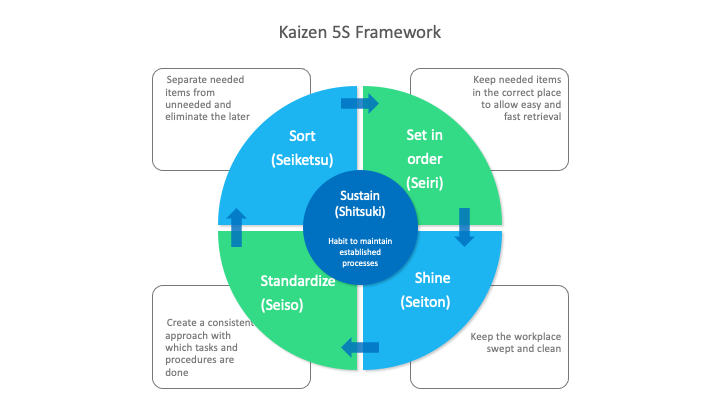
A Kaizen event is a short-term approach as part of a continuous improvement process. For sustaining improvement to occur, CI processes have to be a long-term approach.
The Five Whys is one of the principles of the Kaizen philosophy. It is based on the idea that in order to solve a problem you must get to its root cause. 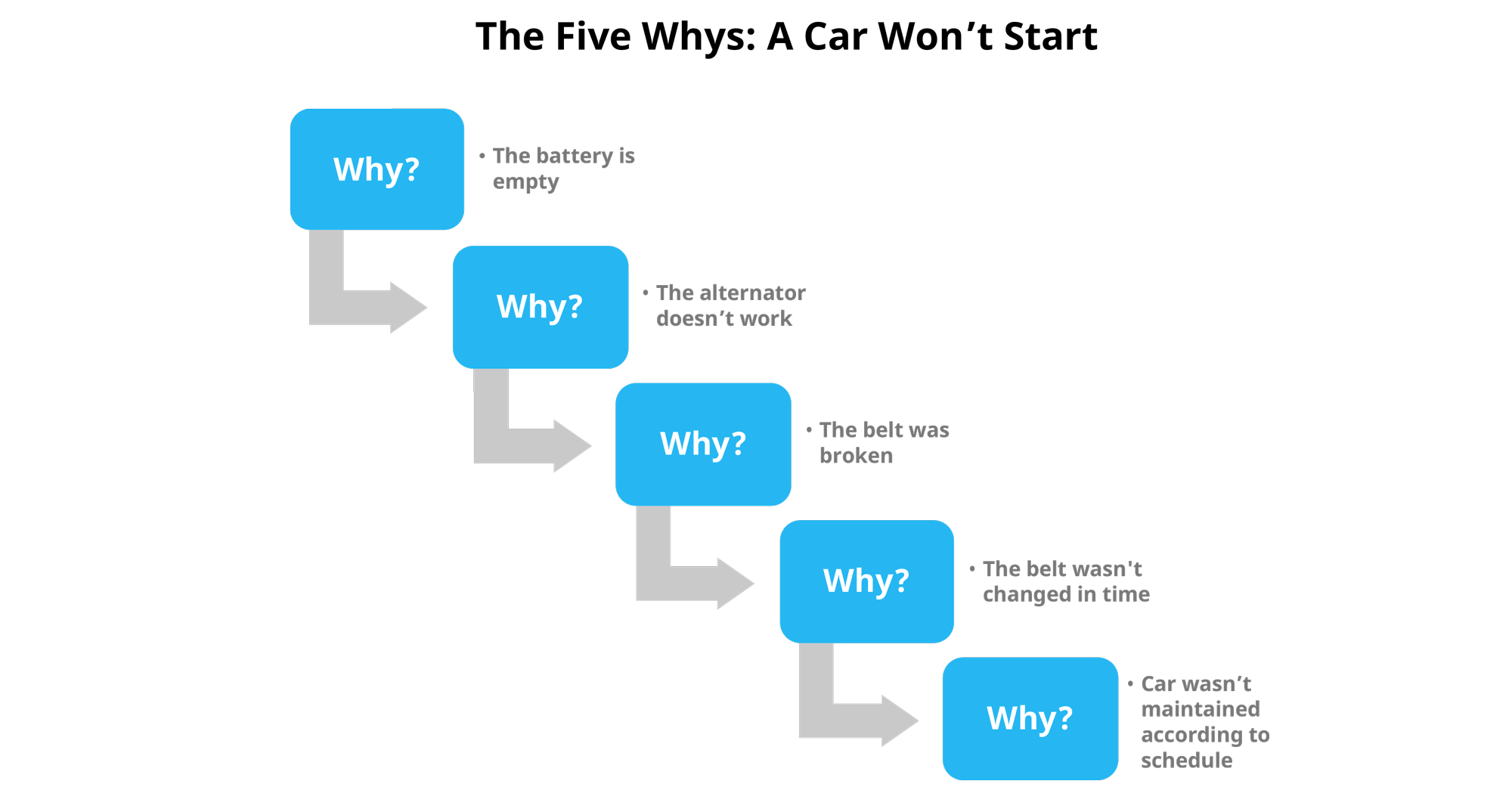
Gemba, in Japanese "the real/actual place" refers to the place where value is created. Traditionally this concept was referring to factory floors which managers would visit in order to paint a better picture of reality.
Where to use Kaizen
3. Six Sigma
Six Sigma is using statistical methods to reduce variations in production processes and eliminate defects and errors. Ultimately, the goal is simple: improve capabilities, increase profit and quality.

DMAIC includes five steps and while it is part of Six Sigma, it can be used on its own for quality improvement.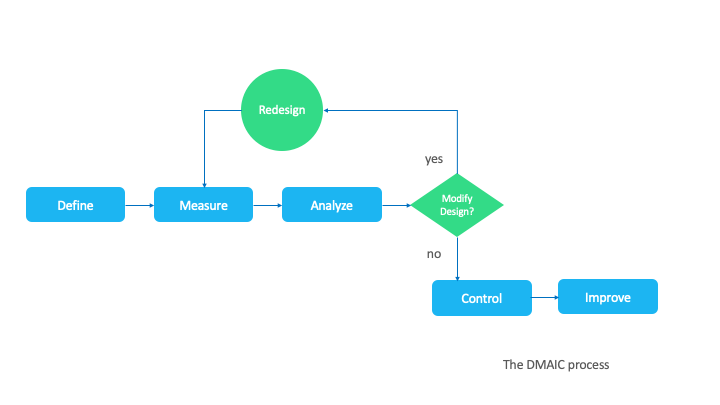

Lean Six Sigma combines Lean Management with Six Sigma and forms a collaborative method of removing waste and improving performance. By combining the two you can ensure better results and greater improvements. 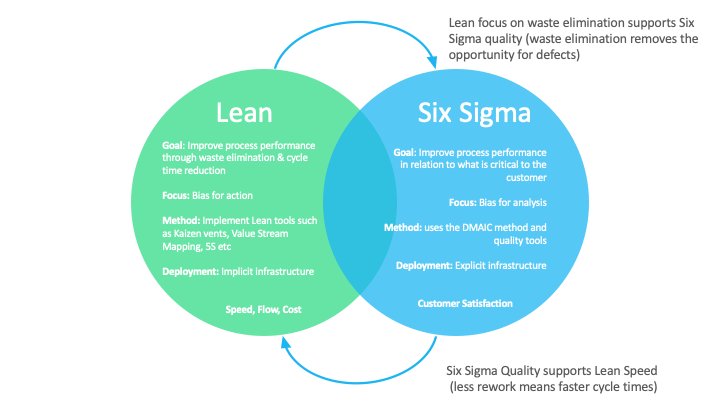
Where to use Six Sigma
4. Theory of Constraints (TOC)

Where to use TOC
How to implement continuous improvement processes
Getting ready: the prerequisites of continuous improvement processes

First thing first, top management plays a key role, and it all starts with their commitment to the task ahead. Without dedicated leadership that is willing to make decisions and invest in the improvements, it's easy for employees to lose enthusiasm and get carried away by other things.
- Does your process fit within your overall business strategy?
- Does the process answer the needs and problems you want to solve?
Best practices to get your CI process right
This is more than just another nice thing to have, it's the fuel that makes daily improvements second nature.
Your process deployment approach has to be strategic as well. Continuous Improvement initiatives cannot be thrown into the abyss. The deployment of these initiatives dictates how employees will get on board with the change.
Unless you define what needs improvement, how it looks like in practice, then how can people know what to work towards? That's why an important step is to define what you mean with an improvement, put things into perspective, and give concrete examples.Key challenges to be aware of:
1. A fixed min d set
At the end of the day, it all comes down to the people we work with. They are the ones who sustain improvement and also the ones who can hinder it. A common challenge is the fear of change that occurs to many employees.
Transparency plays a huge role not only in building a good continuous improvement culture, but also in giving everyone access to the data they need. Many managers fail in communicating the strategy, problems and initiatives because they don't democratize access to information.
This might seem like an obvious one, but it's surprising how many companies get lost in their own small adjustments and apparent victories. In the end it's not about the process but what you want to achieve with it.
Continuous improvement process examples1. Google

2. Danaher:


3. Haier

4. Tesla

Getting started

Conclusions
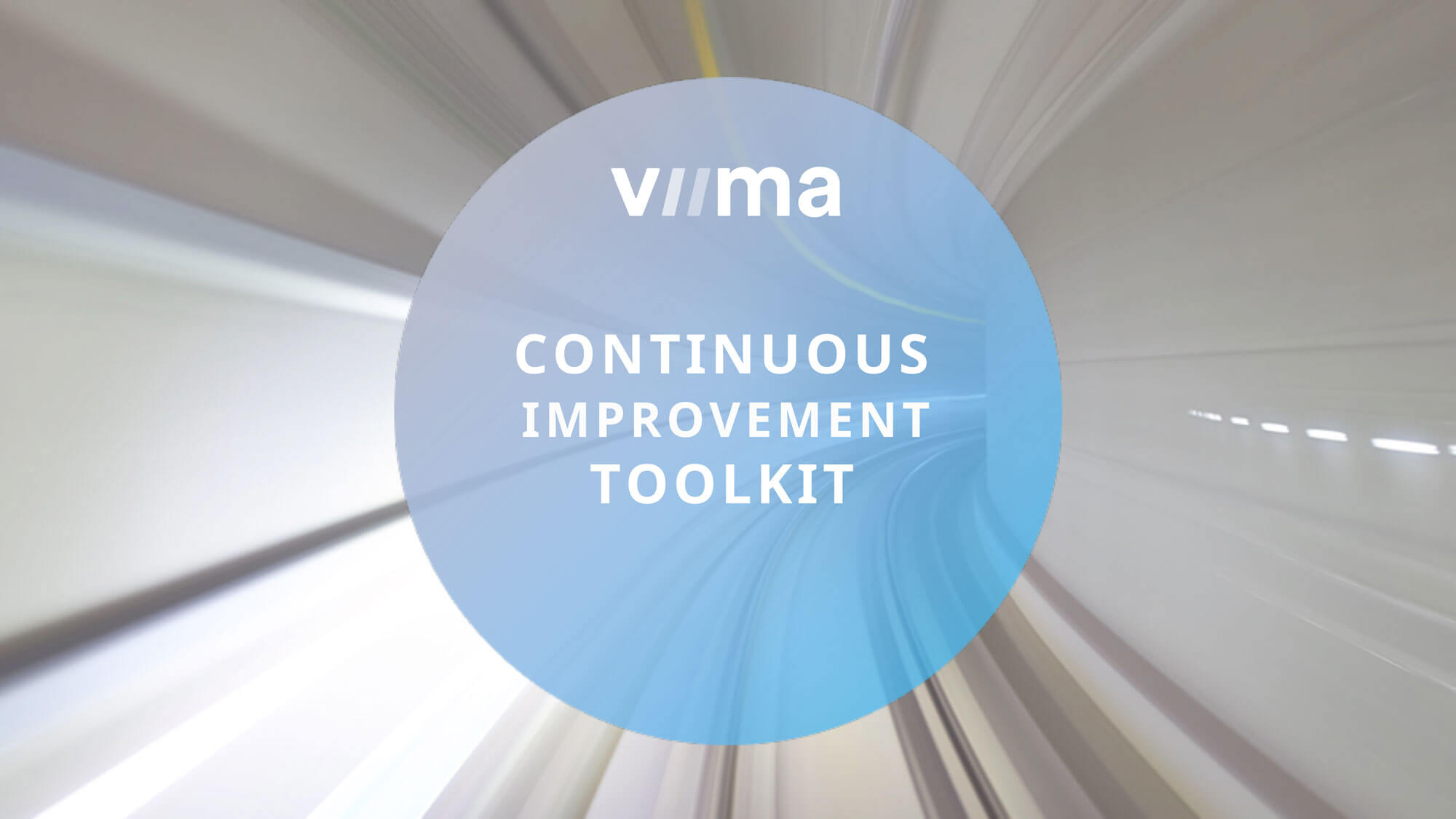

Source: https://www.viima.com/blog/continuous-improvement-processes
Postar um comentário for "Visual Representations of an Improvement Process Continuous Improvement Cycle Process"